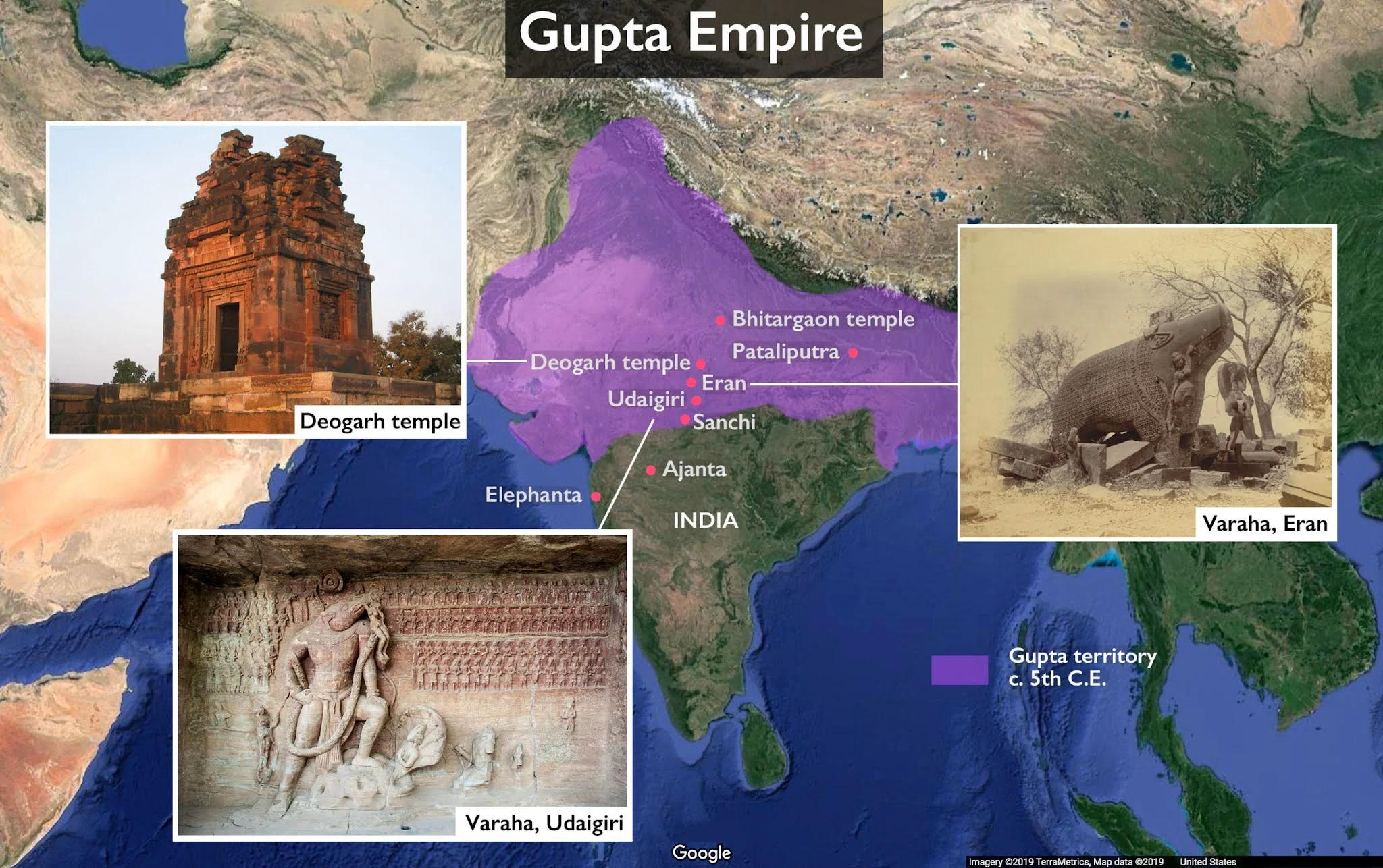Gupta Empire ruled over ruled over 3.5 million sq.kms . Gupta empire the capital of which was Pataliputra, in present-day Bihar. The founder of the Gupta dynastyis Sri Gupta . Gupta Empire region extended from the Himalayas in the north to the Krishna and Godavari Rivers in the south; and from Balkh (Afghanistan) in the west to Brahmaputra River in the east. Gupta Empire covered part part of India ,Pakistan, Bangladesh ,Myanmarand Afghanistan
This period became known as the Golden Age of India because it was marked by extensive inventions and discoveries in science, technology, engineering, art, dialectic, literature, logic, mathematics, astronomy, religion, and philosophy.
The Gupta Empire rose to prominence in 320 AD and spread to large parts of northern India, central and small parts of southern India. Gupta Empire was large and at its peak, covered 21 kingdoms both inside and outside Indian subcontinent.
The game of chess was born in India during the Gupta dynasty in the 6th century. Today, more than 1500 years later, it is played in 172 countries
It was a period of peace and prosperity and ancient India under the Gupta Dynasty went through a phase of development and growth that spanned over philosophy, religion, logic, literature, art dialect, mathematics, astronomy, engineering, technology and science.
Aryabhata was the first mathematician to give an accurate approximation of π and was also the first person to mention that π was irrational and Aryabhata’s contribution to ZERO made him immortal through ages. He literally did not use the symbol for zero but his place value system implicitly used zero.
Takshila and Nalandawere the two universities that were established during the Gupta Empire. Both universities were known for very high standards of education . Nalanda University in particular was also known for offering hostel facilities to studentsand even accepted foreign students
Gupta Empire had well-established trade relations with European nations, Ceylon and China.
Guptas maintained a huge army consisting of 10,000 war elephants, 20,000 charioteers, 50,000 cavalry and 500,000 infantry. They also maintained a powerful naval force of 1200 war ships.
Fa Xian: A Chinese traveler who recorded detailed observations about his experience in the Gupta Empire in his journal. It was later published ayurvedic: A form of alternative medicine established in India.











